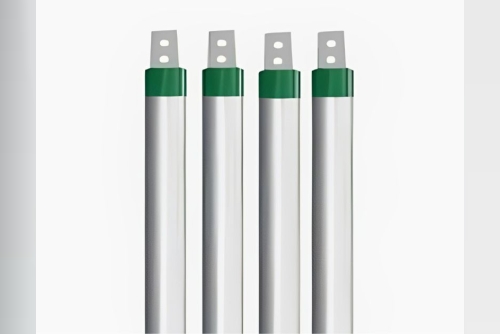Earthing and grounding systems are essential components of any electrical infrastructure. They protect life, property, and equipment by offering a path of least resistance to fault currents and lightning surges. Among various earthing materials, GI (Galvanized Iron) Pipe Electrodes have earned wide popularity due to their durability, performance, and cost-effectiveness.
But not all GI electrodes are the same. Depending on soil conditions, application types, and project scale, different subtypes of GI Pipe Electrodes are used to meet specific grounding requirements. In this post, we’ll introduce you to the top 5 subtypes of GI Pipe Electrodes that industry professionals should be aware of — especially if you're sourcing from a trusted B2B portal like Pipex.
1. Hot Dip GI Pipe ElectrodeThis is the most widely used and reliable variant. The Hot Dip GI Pipe Electrode is manufactured using the hot-dip galvanization process, where a mild steel pipe is immersed in molten zinc. This process forms a strong protective coating that resists corrosion for many years, even in aggressive soil conditions.
These electrodes are ideal for grounding systems in telecommunication towers, electrical substations, industrial plants, and high-rise buildings, where longevity and electrical conductivity are non-negotiable. The zinc coating also ensures the electrode can remain active in the soil for extended periods without degrading, providing consistent performance in all weather conditions.
2. GI Funnel PipeThe GI Funnel Pipe is a cleverly designed subtype, primarily used to maintain soil moisture around the electrode — a critical aspect for effective earthing. It features a funnel structure at the top, allowing for easy water pouring during installation and maintenance.
The funnel pipe ensures that moisture or backfill materials like salt and charcoal can easily reach the core of the electrode, ensuring uninterrupted conductivity over time. It's particularly beneficial in dry, sandy, or rocky environments, where the natural soil resistivity is high. Its design not only enhances performance but also simplifies maintenance — a win-win for contractors and engineers.
3. GI WireThough technically not a pipe, GI Wire is indispensable in almost every earthing setup. Made from galvanized iron, these wires are available in various diameters and are commonly used to connect GI Pipe Electrodes to electrical panels, distribution boards, and lightning protection systems.
GI Wires offer excellent flexibility, tensile strength, and corrosion resistance. Their galvanization ensures that the wire remains intact and functional even in harsh outdoor environments. Whether you're working on a small-scale residential project or a large commercial site, GI Wire ensures reliable electrical continuity in the earthing network.
4. HDG GI Rod (Hot Dip Galvanized Grounding Rod)When space is limited or deeper penetration is required for grounding, the HDG GI Rod becomes the go-to option. These rods are solid, compact, and hot-dip galvanized for extended life in the soil. Their sleek cylindrical design allows them to be driven deep into the earth using hammers or hydraulic drivers, making them perfect for locations with limited surface area but deep moisture levels.
HDG GI Rods are widely used in electrical substations, data centers, solar farms, and urban installations, where consistent grounding performance is essential but installation space is restricted. Their high mechanical strength and corrosion resistance make them an industry favorite.
5. Perforated GI Pipe ElectrodeAnother advanced variant is the Perforated GI Pipe Electrode, designed to improve the overall effectiveness of the earthing system. These pipes feature strategically drilled holes along the length of the electrode. This design enables better interaction between the electrode, soil, and backfill compounds like bentonite, charcoal, or salt.
The perforations ensure that moisture can enter and distribute evenly, keeping the surrounding soil conductive over time. This makes them ideal for areas with fluctuating water tables, clay soil, or high-resistance environments. The Perforated GI Pipe is becoming increasingly popular for renewable energy projects, telecom infrastructure, and critical installations that demand consistent grounding performance.
Final ThoughtsEach subtype of GI Pipe Electrode plays a unique and essential role in modern grounding systems. Whether it's the robustness of Hot Dip GI Pipes, the maintenance-friendly design of the GI Funnel Pipe, the flexibility of GI Wire, the depth efficiency of HDG GI Rods, or the conductivity boost from Perforated GI Pipes, choosing the right electrode is key to system safety and performance.
At Pipex, we provide a complete range of GI Pipe Electrodes and earthing accessories tailored to your specific needs — all through a streamlined, trusted B2B portal. Whether you're sourcing for a high-volume industrial project or a precision-driven infrastructure job, our catalog is designed to deliver quality, consistency, and reliability.
ConclusionIn today’s fast-evolving industrial and infrastructure landscape, having a reliable and effective earthing system is non-negotiable. By knowing the key subtypes of GI Pipe Electrodes, you’re better equipped to design and install grounding systems that stand the test of time.
At Pipex.ai, we specialize in delivering high-quality GI Pipe Electrodes and accessories through our trusted B2B platform. Whether you need expert advice, bulk procurement, or custom configurations, Pipex is your one-stop solution for all earthing requirements.












